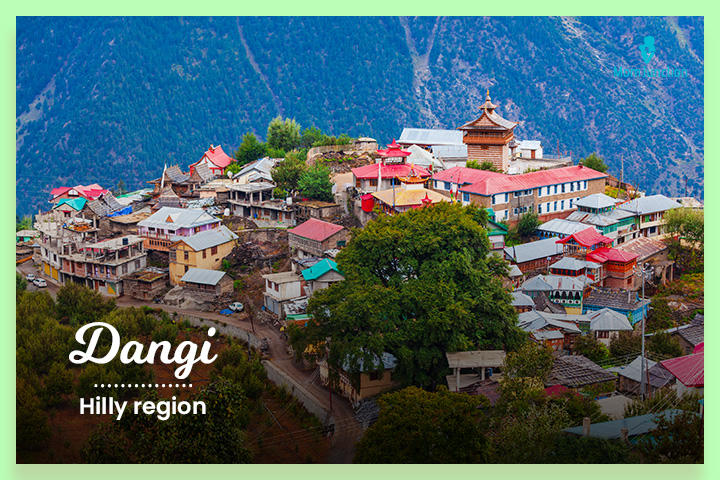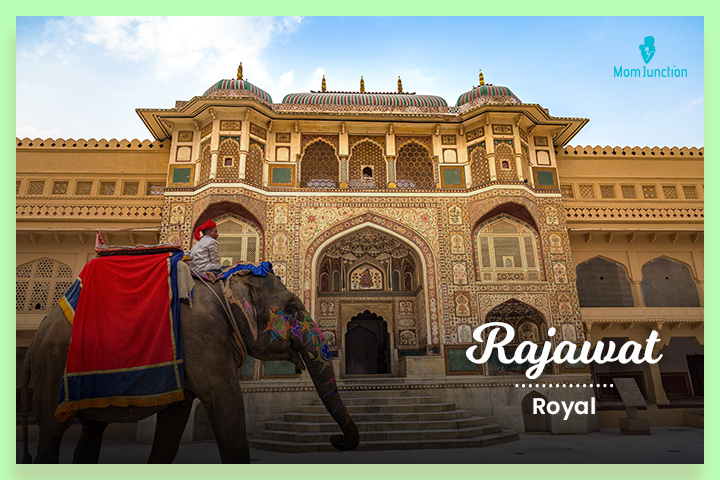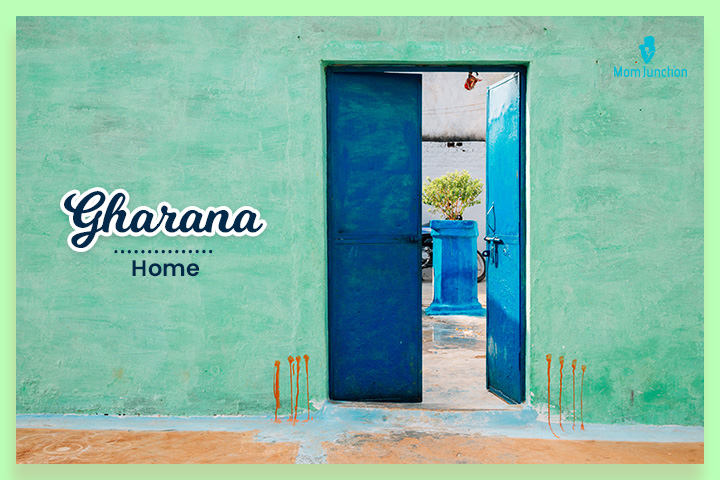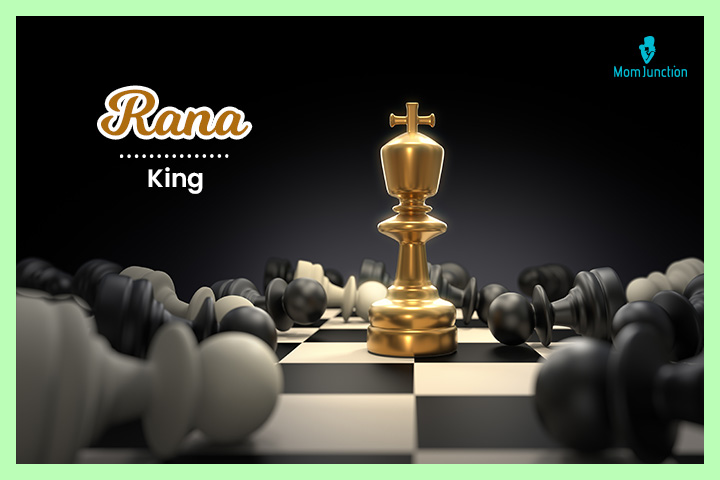The Rajputs are a group of organized patrilineal clans that originated in the northern and western parts of the Indian subcontinent. The word ‘Rajput’ is derived from the Sanskrit word “raja-Putra,” which means “son of a king.” This post combines a list of royal Rajput surnames that you can use. The Rajputs have been known for their bravery, faithfulness, and royalty since their rise to prominence during the 12th century. They have three sub-lineages, namely, Suryavanshi, Chandravanshi, and Agnivanshi. These lineages are further sub-sub-divided into numerous groups and clans. The Suryavanshis, also called Raghuvanshi, are believed to have descended from Surya, the solar deity. Similarly, the Chandravanshis, also known as Somavanshi, are believed to have descended from Chandra, the lunar deity, and Agnivanshi’s from the fire deity, Agni. The Rajputs are known to follow a patronymic naming system, meaning they follow their paternal lineage of names. Read on for a list of Rajput surnames with their origin and meanings as well.
100 Magnificent And Royal Rajput Surnames, With Meanings
Suryavanshi Surnames
1. Aharya
Aharya comes from Sanskrit and means “firm,” “unmovable,” and “unflinching.” It also refers to a mountain.
2. Amethiya
The surname is derived from Amethi, a district in Uttar Pradesh. They originally belonged to Kalinjar in Bundelkhand, and later moved to Oudh or Awadh region, which is now part of Uttar Pradesh.
3. Bais
The surname Bais means “someone who occupies the soil,” and they are found in many regions of Rajasthan and Uttar Pradesh.
4. Baniya
The variant spellings of this surname are Bania, Banya, Banija, Vani, Vaniya, and Vania. It is an occupational surname for those who were merchants, money-lenders, bankers, and dealers.
5. Barmer
Barmer is the name of a district located in the western region of Rajasthan, and a part of the Thar desert. It is a toponymic surname referring to Rajputs, who originally belonged to Barmer.
6. Basadi
It is derived from the Sanskrit word “vasati” referring to “a Jain monastery.” The name would have been toponymic in its origin.
7. Bhadail
Bhadails are the descendants of Rao Ajay, the third son of Rao Sheoji, a Rajput warrior. Bhadails are a subdivision of the Rathore clan of the Rajputs.
8. Bhains
It is also spelled as Vains or Vainas, and they are a sub-group of Bais. The Bhains were renowned for their bravery and warrior skills.
9. Bikas
It is derived from “Vikas,” an Indian baby boy name from Sanskrit. Bikas means “progress,” “expansion,” or “development.” The variant spellings of the surname are Vikas and Bikash.
10. Bola
It is also spelled as Bolan, and are a sub-clan of Suhag, which was a group that ruled places in the Mewar region of Rajasthan. The clan mainly consisted of chieftains.
11. Champawat
It is a toponymic surname derived from Champawat, a district in the North Indian state of Uttarakhand. Champawat is believed to be the place where Lord Vishnu transformed into his turtle incarnation called Kurmavtar.
12. Chattar
Chattar comes from the Sanskrit word “chatr,” meaning “shelter” or “refuge.” Individuals from the Chattar clan often belonged to a king’s military or were warriors who protected people from invaders.
13. Choondawat/Chundawat
They are the descendants of Mewar’s prince, Rana Chunda, who later ruled from the famous Fort Begu in the Chittorgarh district of Rajasthan. Choondawats are known for their great sacrifice and acts of heroism throughout Rajput history.
14. Dangi
The alternative spelling of this surname is Dange, and refers to those living in the hilly region. Dang means “hill,” and likely has origin in the Rajasthani language and its dialects.
15. Dhandhul
They are likely the descendants of Rao Dhandul, the son of Rao Asthan, and the grandson of Rao Sheoji, a famous Rajput warrior. Dhandhuls are a branch of the Rathore clan.
16. Gaur
It refers to descendants of Rajputs who ruled the ancient Gauda kingdom (“Gaura rajya” in Sanskrit) located in the modern-day Bengal region.
17. Gautam
The Gautam clan is said to have descended from a Brahmin called Siringhi, who married the daughter of a king belonging to the Gaharwar clan of Rajputs. In antiquity, Gautams are said to have ruled a region covering present-day eastern Rajasthan and western Uttar Pradesh.
18. Guhilote
They are the descendants of the Guhila dynasty, which ruled Medapata, modern-day Mewar region in southern Rajasthan. The surname is also spelled as Gehlot, Gahlot, Guhila, or Gohil.
19. Jamwal
Jamwal surname originates from the Jamwal Rajputs, who ruled the region of Jammu and Kashmir as the Jamwal dynasty, also known as the Dogra dynasty.
20. Jargurjar/Badgurjar
Badgurjars were originally a warrior clan that ruled several places across present-day Rajasthan and Uttar Pradesh. The clan was known for their bravery and for the construction of monuments, several of which even exist today.
21. Jasrotia
It refers to the descendants of the Jasrotia dynasty, who ruled Jasrot, an eponymous region located in south-western Jammu and Kashmir. The Jasrotias were a sub-clan of Jamwals.
22. Jethwa
The surname bears origin in the Jethwa dynasty, a group of Rajputs who ruled several parts of the Saurashtra region of Gujarat for centuries. The variant spellings are Jethva, Jethi, and Jaitwa.
23. Jodha
It likely refers to the descendants of the Rajput Rao Jodha, the ruler of the Marwar region of Rajasthan and the eponymous founder of the Jodhpur city.
24. Jhala
The surname refers to Rajputs, who likely descended from the Rajput warrior Jhala Zalim Singh. The Jhalas ruled the eponymously named region of Jhalawar, now part of Rajasthan. The alternative spelling of the surname is Zala.
25. Kachwaha
The Kachwahas descended from an ancient clan named Kachapaghat. The Kachwaha Rajputs ruled several parts of Rajasthan, including Alwar and Jaipur.
26. Kalyanot
It is derived from Kalyanwat, which is a sub-clan of the Rajawat clan, who were themselves a sub-clan of Kachwaha Rajputs. The Kalyanots were overseers of the town of Saloli in eastern Rajasthan.
27. Kataha
The name refers to the sub-clan of Bhains Rajputs, who themselves are a sub-group of the Bais clan of Rajputs. Kataha were a group of warriors, chieftains, and village overseers.
28. Khabaria
It is a toponymic surname derived from a village called Khabaria in the Moradabad district of Uttar Pradesh.
29. Khokra
It refers to those who had descended from an ancient Rajput clan called Kokar or Kukar. It is said that there are mentions of the Khokra clan even in the Puranas, the ancient Sanskrit texts.
30. Kothari
It is derived from the element “kotha” of Sanskrit “kosthaka,” meaning “granary” or “silo.” The surname is common in Rajasthani and Gujarati communities.
31. Minihas
Minihas refers to those who are said to have descended from Ikshvaku, the founder of the Ikshvaku dynasty. Lord Ram also belonged to the Ikshvaku dynasty. Some of the spelling variants of the surname are Minhas and Manhas.
32. Mohania
This last name was adopted by the descendants of Reosar Rao, who established a kingdom around the present-day town of Mohania in Bihar. Mohanias are one of the sub-clans of the Rathore group of Rajputs.
33. Naru
Narus are the descendants of Nipal Chand, a Rajput of Mathura, who migrated to the Punjab region and adopted the name Naru Shah.
34. Pakhral
Pakhral refers to a sub-clan of the Dogra or Jamwal Rajputs, who were the rulers of Jammu and Kashmir. Pakhrals are said to have originated in Rajasthan but later migrated to the Kashmir region.
35. Patial
They are said to be a sub-clan of the Chattar group of Rajputs. They originated in Rajasthan but later migrated eastward towards Punjab and Uttarakhand. Patial Rajputs are said to have ruled over the ancient Trigarta kingdom, located at modern-day Jalandhar.
36. Peeparra
It is a toponymic name referring to those who originally belonged to the Peeparra village in Bharatpur district of Rajasthan.
37. Pokharan
It is a toponymic surname referring to those from Pokhran, a village in the Jaisalmer district of Rajasthan. This name Pokharan or Pokhran, comes from Hindi and means “palace of five mirages.”
38. Pundir
The surname is derived from the Sanskrit word Purandara meaning “the destroyer of forts.” They originally held homesteads in Nahan, Nagaur, Garhwal, and Saharanpur.
39. Rajawat
The surname comes from Sanskrit and means “like a king” or “royal.” Rajawats have been predominately located in the state of Rajasthan.
40. Randa
It has a toponymic origin and refers to those who originally belonged to the village of Randa in the Dhar district of Madhya Pradesh.
41. Rao
Rao is a title and surname native to India. It is a cognate of the Hindi word “Rajah,” meaning “king.” It was originally used only for the royal head of a state.
42. Rathore
The clan hails from the Marwar region of Rajasthan. Rathores consider themselves the direct descendants of Lord Ram. The variants of this last name include Rathaur, Rathor, Rathur, Rathod, Rathhour, and Rahtore.
43. Saktawat/Shaktawat
It is a patrilineal descendant of Prince Mir Shakti Singh, the brother of Maharana Pratap of Mewar dynasty. They are a branch of the Sisodia clan of Rajputs.
44. Shekhawat
Shekhawats are the descendants of the great Rajput warrior Maharao Shekha Ji. They ruled over the eponymous Shekhawati region in north-eastern Rajasthan.
45. Sheobramhpota
The surname came into existence from the descendants of Rao Sheobramh, the fourth son of Raja Udaikaran of Amber. It is a sub-clan of Kachwaha Rajputs.
46. Sikarwar/Sakarwar
It is a clan of Rajputs that migrated to various parts of north and east India in the ninth century. They built several forts and structures now located in modern-day Bihar and Uttar Pradesh.
47. Sisodia
Sisodias belong to the kingdom of Mewar, and they were earlier known as Gehlot or Guhilot. The surname is also spelled as Shishodia, Sesodia, Sishodia, Sisodya, Shishodya, or Sisodiya.
48. Sunda
Sundas originated from a clan that was originally spread across various regions of Rajasthan, Haryana, and Punjab.
49. Tanwar
It is a sub-group of the Tomar clan of Rajputs. The Tanwars were originally found in several parts of north and west India.
50. Tomar
Tomars are said to have descended from Arjuna, one of the Pandavas. The clan ruled various parts of north and west India since the ninth century. The variant spellings of this surname are Tomara, Tomer, Taur, and Toor.
51. Vanar
It is derived from the Sanskrit word “Van,” meaning “forest.” The clan is said to have originated from a group of warriors that predominantly dwelt in the forest.
Agnivanshi Surnames
52. Baghel
Baghels were Rajputs that were predominately located in and around the Dholka city of Gujarat. They rose to prominence in the 13th century and established the Baghela dynasty in Gujarat. Some of the variants of the surname are Baghela, Waghela, and Vaghela.
53. Bhaal
It is a toponymic surname referring to Rajputs, who originally belonged to the Bhal region of Gujarat. Bhal lies at the junction of modern-day Ahmedabad, Bhavnagar, and Anand districts of Gujarat.
54. Bhaduria
Bhadurias were Rajputs mainly found in regions across eastern Rajasthan, western Uttar Pradesh, and northern Madhya Pradesh. The alternative spellings of the surname are Bhadouria, Bhadoriya, and Bhadoria.
55. Chouhan
The surname comes from Chahamana, a legendary hero who is said to be the progenitor of Chouhans. The variant spellings are Chauhan, Chohan, and Chohhan.
56. Deora
The Deoras are the descendants of Rao Deoraj, a Rajput warrior who was originally from the Chouhan clan. The Deora clan ruled several parts of Rajasthan and regions around Delhi. Alternative spellings of the surname are Devda, Devra, and Devre.
57. Dodiya
Dodiya, also spelled Dodia, surname refers to a clan of Rajputs who originally belonged to the Multan region, now part of present-day Pakistan. Dodiyas migrated to parts of Rajasthan and Gujarat during the 14th century.
58. Gharana
The surname is likely derived from the Sanskrit word “Grih,” meaning “home.” Gharana may have referred to a particular house or clan of Rajputs who adopted the name.
59. Hoda
The surname was likely a title of unknown origin. Hodas form a part of the Agnivanshi lineage of Rajputs.
60. Khichi
It refers to a sub-clan of the Chouhan group of Rajputs. The Khichis ruled parts of Rajasthan and Madhya Pradesh. They are known to have founded the Khilchipur State, with the town of Khilchipur still existing today.
61. Mori
The Mori Rajput clan ruled a region around Chittor, now known as Chittorgarh. It was the Mori king Chitrangad Mori who built the Chittorgarh fort, India’s biggest fort. Alternative spellings of the surname include Maurya and Morya.
62. Naga
The surname refers to a group of Rajputs belonging to the ancient Naga kingdom. Nagas spread across many regions of India, including north and east India. The clan is also referred to as Nagavanshi.
63. Nirwan
Nirwan or Nirban were a sub-clan of Chouhan Rajputs, who were allegiant to Maharana Pratap of Mewar.
64. Parihar
The Parihars were the founders of the Parihar dynasty in the region of Kannauj, Uttar Pradesh. The clan was also found in many other places in Uttar Pradesh. Some of the alternative names of the clan are Pratihar, Parhar, Padhiyar, Padiyar, Padiyal, and Parhiyar.
65. Pawar
It is the name of a Rajput clan, which is considered to be one of the original Agnivanshi clans. The Pawars ruled a region in a western-central India, around the modern city of Dhar in Madhya Pradesh. Alternative spellings of the surname include Parmar and Parmara.
66. Ponwar
They are sub-clan of Parmar and ruled regions in eastern Rajasthan and western Madhya Pradesh. The alternative forms of this surname are Panwar and Puar.
67. Sodha
Sodha is one of the thirty-five branches of the Parmars. They are said to have originated from an ancient tribe called Saudha, settled in Sindh, now part of Pakistan.
68. Solanki
The clan is said to have originated from Chilonki, a mythical human created by Lord Brahma. Solankis are said to have been the Chalukyas who ruled several parts of south and south-central India.
69. Sonigurra
It is a sub-group within the Chouhan clan of Rajputs. The Sonigurras ruled a region around Jalore in Rajasthan. The surname is also spelled as Songara or Songira.
Chandravanshi Surnames
70. Bachhal
Bachhals are said to be the descendants of Raja Bairat, who ruled a region around Kheri in Uttar Pradesh in ancient times. The clan also had a presence in parts of the Rohilkhand region of Uttar Pradesh.
71. Banaphar
The Banaphar Rajputs ruled several parts of northern and central India. The alternative spelling of the surname is Banafar or Banafer.
72. Bhangalia
Bhangalia Rajputs were predominantly settled in the state of Himachal Pradesh. They ruled several regions in the modern-day Kangra district of Himachal Pradesh.
73. Bhatti
The surname refers to a clan of Rajputs who claim descent from Lord Krishna. The Bhattis ruled Jaisalmer and its surrounding desert region. The alternative spelling of the surname is Bhati.
74. Bundela
It is a toponymic surname referring to Rajputs, who were settled in Bundelkhand, a mountainous region in north-central India. Bundelas are said to have migrated eastward from Rajasthan to Bundelkhand many centuries ago.
75. Chandela
Chandela refers to the ancient clan of Chandelas, who established the Chandela dynasty across the Bundelkhand region of north-central India. The clan gets its name from “Chandra,” the Sanskrit name for the Moon. The variant forms of this surname are Chadla, Chandel, Chandele, and Chandail.
76. Chavada
The clan is said to have originated from Chavada Dadda, a Rajput warrior. The Chavadas predominantly ruled around the region of Patan and several other parts of northern Gujarat. The alternative spellings of the surname are Chavda and Chawda.
77. Chudasama
It refers to a clan of Rajputs who ruled several parts of the Saurashtra region of Gujarat. The Chudasamas also had a presence in the Kutch region.
78. Dhaiya
It is a clan of Rajputs who migrated to several parts of northern India, especially Haryana. The alternative spellings of the surname are Dahiya and Dahia.
79. Dongre
It a toponymic surname and likely originated from Dang, a place in southern Gujarat. The alternative spellings are Daungre and Dongar.
80. Jadeja
Jadejas ruled several parts of northern Gujarat, notably the region of Kutch. The Rajput clan descended from Jam Lakho Jadani, a successful ruler of the Kutch region. The alternative spelling of the surname is Jarejo.
81. Jadon
The Jadons are said to be the descendants of Yadu, the king from whom Lord Krishna descended, too. The Jadons ruled around the regions of Bayana and Karauli in Rajasthan. The surname is also spelled as Jadaun.
82. Jarral
The Jarrals are said to have descended from Arjuna, one of the Pandava kings. The Jarrals predominantly ruled parts of Jammu and Kashmir, Himachal Pradesh, and Punjab.
83. Johiya
These Chadravanshi Rajputs are said to be the descendants of the ancient Yaudheya warrior tribe, which ruled certain parts of northern India during the Gupta empire period. The alternative spellings of Johiya are Joia, Joiya, Joya, Joyea, and Joeia.
84. Katoch
The surname refers to the descendants of the Katoch dynasty, who ruled the Trigarta kingdom, which covered parts of modern-day Punjab and Himachal Pradesh. It is the Katochs who built the famous Kangra fort in Himachal Pradesh.
85. Pahore
Pahores refers to a clan of Rajputs who either descended from King Porus or from the ancient tribe called Puru. The alternative spellings of the name are Pahor and Pahur.
86. Pathania
Pathanias are said to have descended from the Tomar clan of Rajputs. They ruled several parts of Jammu and Kashmir and Himachal Pradesh from their capital Nurpur in Himachal Pradesh.
87. Porus
It refers to the descendants of King Porus, the ruler of a kingdom in Punjab located between the Chenab and Jhelum. The alternative spellings of the surname are Puru, Pururava, and Parvata.
88. Raidas/ Ravidas
The surname likely refers to a clan of Rajputs who were followers or devotees of Ravidas, an Indian saint and poet of the 15th century. Mirabai, a Rajput lady of a Royal family, was one of the followers of Ravidas.
89. Raizada
The Raizadas are an offshoot of the Chudasama Rajputs. The Raizada Rajputs ruled parts of the Saurashtra region of Gujarat. The surname is also spelled as Raijada.
90. Sarvaiya
It refers to a clan of Rajputs who ruled parts of the Kathiawar peninsula in western Gujarat. The Sarvaiyas are said to have been a sub-group of Chudasama Rajputs. The alternative spellings of the name include Sarvia, Sarvaiyya, and Sarwia.
91. Salar
The Rajput clan is said to have originated from an ancient warrior clan called Shaiva. The alternative spellings of the surname are Salar and Salarya.
92. Soam
It is the clan of Rajputs that are said to have descended from Som, who is the Hindu lunar deity. The alternative forms of this surname are Som, Somvanshi, and Soma.
Other Common Rajput Surnames
93. Deshmukh
It means the “head of the state” or “head of the region” in Hindi. This surname originated from someone who was the head of the district or the chieftain for a region.
94. Kapadia
It comes from the Gujarati word “Kapad,” and is an occupational surname for a cloth merchant. Kapadia is also a popular surname among Rajputs.
95. Kapse
It comes from the Marathi word “Kapus,” meaning “cotton.” The surname likely referred to someone who worked in or owned cotton mills.
96. Lokhande
It means “someone who is like iron,” and comes from the Marathi word “Lokhand,” meaning “iron.” It probably referred to someone strong and well-built.
97. Mehta
It is a surname found in several communities across India. The surname comes from the Sanskrit word “Meht,” meaning “great,” “large,” or “majestic.”
98. Rana
It was formerly used as a title by Rajput kings, and later developed into a surname. Rana comes from Sanskrit and means “king.”
99. Rawal
Rawal means “king,” and is derived from the Sanskrit word “Raja” with the same meaning. Rawal was originally used as a first name in parts of Gujarat and Rajasthan.
100. Waghmare
It means “tiger killer,” and comes from Marathi. It refers to someone in the occupation of exterminating tigers or a hunter.
Discover More Names
When you have to choose a name for your baby, a few hundreds of names may not be just enough. Keep digging our mine of baby names until you find that one precious gem.
Rajputs have been associated with Indian history for a long time. Several Indian rulers belong to this clan, and they are mostly based in the western and northern parts of the nation. They were known for their loyalty and courage. These royal Rajput surnames have diverse origins and roots in several Indian languages. Surnames such as Jodha, Rathore, Rao, and Deshmukh are popular around the globe. Also, each surname has a profound meaning and has remained unchanged for generations, depicting the rich history and culture of the community.
Key Pointers
- The Sanskrit term ‘Rajput’ means ‘son of a king.’
- Rajput surnames fall into three main vansh – Agnivanshi, Chandravanshi, and Suryavanshi.
- Popular examples of Suryavanshi Rajput surnames symbolizing ‘sun’ include Gaur, Gamwal, and Jasrotia.
- Agnivanshi surnames, symbolizing ‘fire,’ include choices like Solanki, Deora, and Naga.
- Chandravanshi surnames associated with ‘moon’ include Katoch, Raizada, and Soam.
Watch this informative video and have a glance at the significance these powerful names have in Indian culture. Discover the fascinating history of Rajput (Thakur) surnames.















